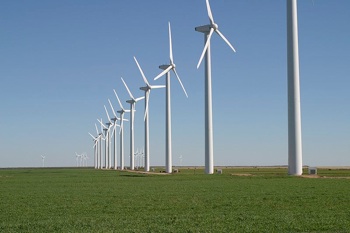
2017 Q1 letter: Renewable energy in the Trump era
 Dear Friends,
Dear Friends,
The first quarter of 2017 was full of eventful news for markets. We saw a Fed rate hike, record low unemployment rates, all time highs for US equity markets and a new administration sworn in, with Republicans now in full control of Congress. In our view, this likely marks an inflection point for the current business cycle and market levels.
Since the election, we have received several queries from our socially responsible investors about the fate of environmental and climate change regulation under the Trump administration. We understand and share many of their concerns. We hasten to add, however, that infrastructure spending and projects are usually undertaken with long time frames in mind. Enterprises making decisions about what kind of power plants to build will consider the costs over a long term. They are well aware that the current administration and its policies are not set in stone.
We do not expect a raft of coal plants to be built over the next four years — in fact, 2017 has seen an acceleration of the closure of several legacy coal plants. Large plants typically take 3-5 years to build and operators have to factor in the possibility that they will face a changed regulatory environment just as the plants come online. Natural gas prices are likely to play a much larger role in determining what resource mix generates our electricity. The cost of utility scale renewable solar power continues to fall, and though it is not yet competitive with cheap gas, it is not far off either. The IEA estimated the average capital costs of photovoltaic solar plants under construction to be 35-45% higher than natural gas plants per unit of energy produced. An array of tax credits make solar competitive with gas. though the precise economics are driven by regional factors and weather. Wind and hydroelectric power are already competitive with natural gas.
At the risk of appearing sanguine, we think that technological advances, consumer preferences, and the economics of scale have brought us to the point where renewable energy will be competitive with conventional electricity generation going forward. Installed renewable capacity will continue to increase, with or without incentives. If fuel costs move higher, renewables will be become very attractive.
In our view, purchasing certain sectors based on the administration’s stated policy preferences is unlikely to lead to consistent gains. Our reasoning is based on the Trump administration’s penchant for changing direction at the drop of a hat, and secondly on the opposition to various aspects of their policy agenda from either side of the aisle in Congress. In the medium and long-term, valuations and the business cycle will determine investor success. Neither looks particularly fortuitous at the moment for risk assets (equities, or long-term/lower-quality bonds). We continue to recommend a defensive shift for clients based on these factors.
Regards,
Subir Grewal, CFA, CFP Louis Berger